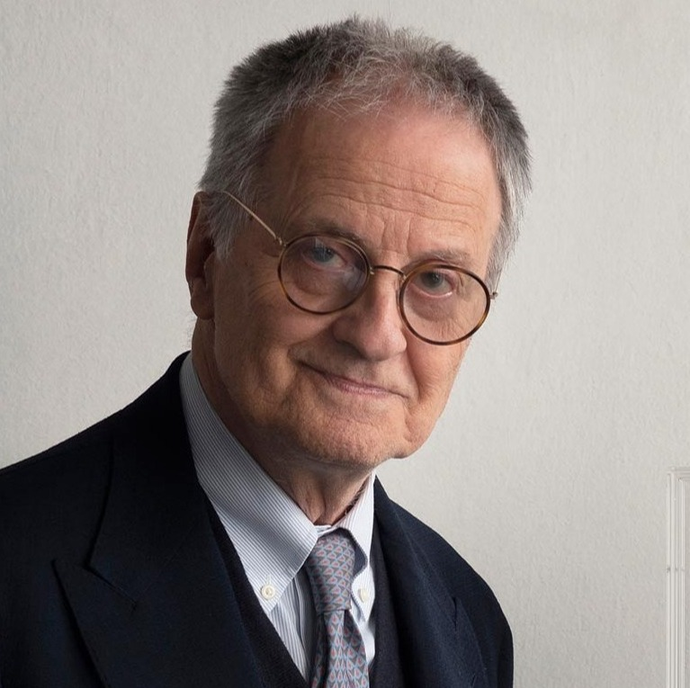
Giulio Paolini
Giulio Paolini, a prominent figure in Italian conceptual art, has crafted a multifaceted body of work that reflects his profound contemplation of art and his era. His cohesive multimedia approach delves into the intricate connections between artwork, the viewer, and the artist.
Biography of Giulio Paolini
Giulio Paolini, born in 1940 in Italy, has developed a sophisticated research methodology that centers not only on the artist's tools but also on the artist's role as a language operator and collaborator of the viewer. In the mid-1960s, he became affiliated with the Arte Povera movement.
In the 1960s, the early works of Paolini aimed to investigate the role of painting in space. One of his notable pieces from this time is "L'Esprit de Finesse" (1966), an acrylic painting on a triangular canvas that is part of the Pinault Collection. Alongside this, Paolini also developed an interest in photography, often using it to showcase artistic activity or the artwork itself, as seen in "Invenzione di Ingres" (1968).
In the following decade, the concept of duality became more prominent in Paolini's work, exemplified by "Mimesi" (1975-1976), which consists of two identical plaster models of Venus. Since the late 1980s, the artist has focused on questioning the idea of exhibitions, creating complex installations that are often in situ.
Paolini has showcased his work extensively on a global scale and has participated in several editions of Documenta and the Venice Biennale. In addition to a significant number of solo and group exhibitions and an extensive bibliography, Paolini has garnered numerous awards and recognitions throughout his career, including the Japanese Praemium Imperiale for painting in 2022.
Currently, the artist lives and works in Turin.
Giulio Paolini's Art Style
Giulio Paolini experiments with various materials such as photographs, plaster casts, drawing paper, Plexiglas, and objects. His artistic expression is characterized by elements such as citation, duplication, and fragmentation, all of which serve as means to create a deliberate distance between a completed model and the actual work, effectively turning it into a "theatre of evocation."
Paolini's work often incorporates mirrors, frames, and other objects that draw attention to the act of observation and the construction of meaning in art. The artist is also known for the utilization of classical and mythological imagery, often blending it with contemporary elements to establish a dialogue between past and present.
His designs are meticulously crafted, emphasizing additive dynamics like order, repetition, and juxtaposition, as well as centrifugal forces involving explosions and dispersals originating from the center or centripetal forces involving concentration, superimposition, and joining.
In more recent times, Paolini's persistent exploration of the definition and purpose of art has become increasingly focused on the act of exhibiting, which he views as the pivotal moment of encountering a work of art.
Years:
Born in 1940
Country:
Italy, Turin
Gallery: